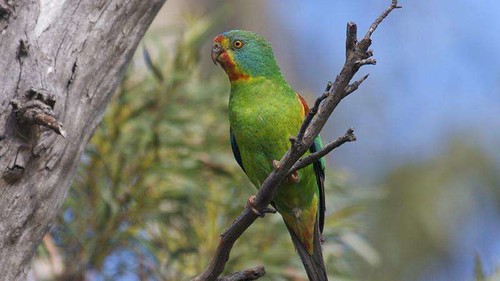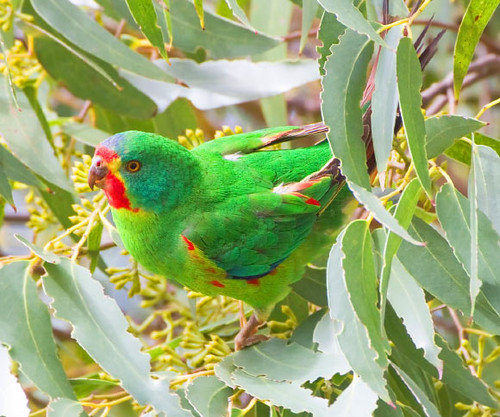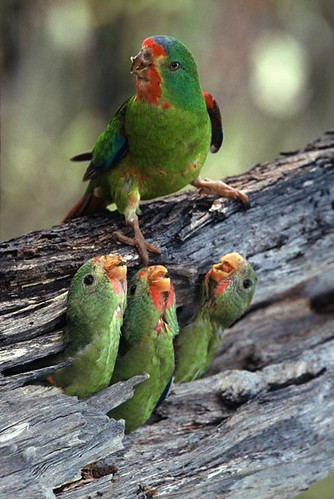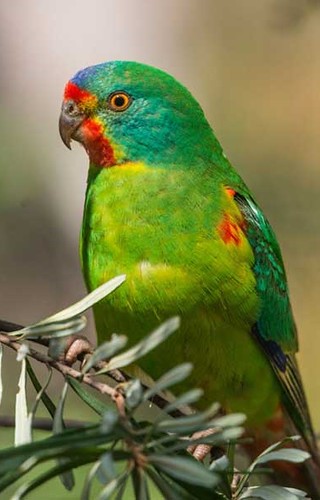 Swift Parrot. Imabe by Henry CookAn endangered bird, a government-owned logging corporation and a desperate plan to get better green bragging rights. Thom Mitchell reports.
Swift Parrot. Imabe by Henry CookAn endangered bird, a government-owned logging corporation and a desperate plan to get better green bragging rights. Thom Mitchell reports.
Tasmanian Authorities have again been called out for failing to protect the endangered Swift Parrot, with three prominent environment groups yesterday slamming Forestry Tasmania for disregarding scientific warnings to make way for the logging of its last sanctuary.
Even as the government corporation seeks to be certified as a sustainable forester, it is reportedly fishing for a green group that will give wings to its plans to log in contravention of scientific evidence.
The outcry follows an earlier debacle, exposed by Environment Tasmania late last month, which revealed the Tasmanian Department of Primary Industries, Parks, Water and Environment ignored its own scientists’ expert advice and forged ahead with the logging of key breeding habitat.
Click to read more ...
 Thursday, September 10, 2015 at 12:32
Thursday, September 10, 2015 at 12:32 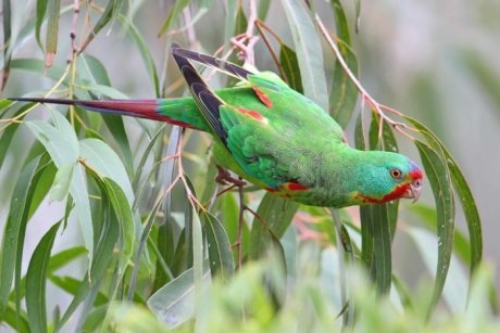 The swift parrot breeds in Tasmania and migrates north to south eastern Australia from Griffith-Warialda in New South Wales and west to Adelaide in the winter. Image by CHRIS TZAROS
The swift parrot breeds in Tasmania and migrates north to south eastern Australia from Griffith-Warialda in New South Wales and west to Adelaide in the winter. Image by CHRIS TZAROS

